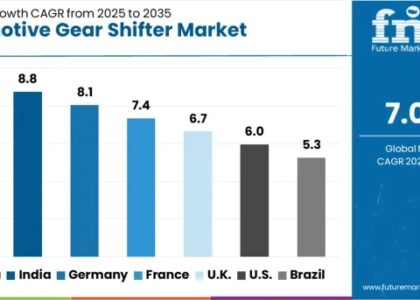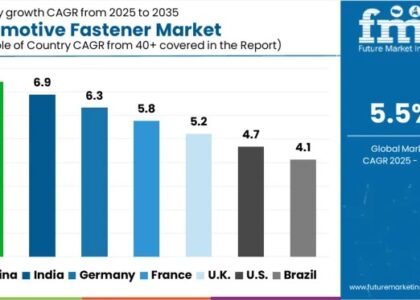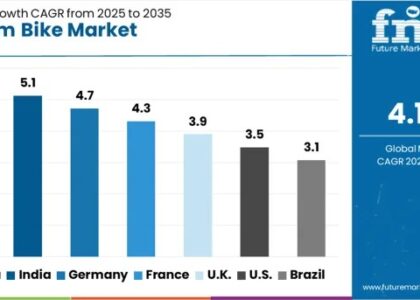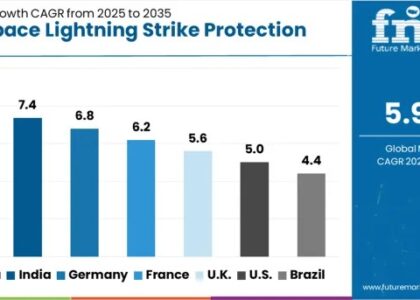The Anti-Caking Agents Market has experienced significant growth in recent years, driven by the rising demand for processed and convenience foods across the globe. These agents are additives that prevent the formation of lumps in powdered and granulated products, enhancing their flowability and shelf life. With the food industry’s focus on delivering high-quality products and maintaining consumer satisfaction, anti-caking agents have become essential ingredients in various food applications.
Moreover, the expansion of the food processing industry, advancements in technology, and increasing consumer awareness about product quality have all contributed to the market’s expansion. Additionally, the pharmaceutical and cosmetic sectors have also embraced anti-caking agents to enhance the performance and consistency of their products. As health-conscious consumers seek products with minimal additives, manufacturers are investing in innovative, natural anti-caking solutions derived from plant sources. Overall, the Anti-Caking Agents Market is expected to witness continued growth and innovation in the coming years.
The global anti-caking agents market is expected to reach a market valuation of US$ 754.4 Mn in 2022, with sales growing at a CAGR of 4.7% over the forecast period.
Ready to take your business to new heights? Explore our comprehensive Sample report on the Anti-Caking Agents Market and unleash your growth potential! https://www.futuremarketinsights.com/reports/sample/rep-gb-6842
An anti-caking agents is a type of an additive which is added to powdered or granulated materials such as table salt or confectionaries so as to avert the formation of lumps. The formation of lumps is an undesired situation called as caking. The purpose of adding an anti-caking agent to food products is to act as a food additive that keeps powders or granulated materials such as milk powder, powdered sugar, tea and coffee powders used in vending machines, table salt etc. flowing freely.
In terms of anti-caking agent applications in animal feed, red lake diatomaceous earth develops the fluidity and mixing abilities of the animal feed. Some anticaking agents are soluble in water, whereas the others are soluble in alcohols or other organic solvents. They either absorb excess moisture or they coat particles and render them water repellant. The commonly used anti-caking agent is calcium silicate, which is used in the food & beverages industry.
The right amounts of fertilizer anti-caking agents deliver robust, long-lasting caking control, and are relatively easy to apply to dry fertilizers in a particular operation. These ant-caking agents comprise of ingredients which are suitable for safe use in facilities where they are applied as well as for all downstream uses and applications including agriculture. Thus, anti-caking agents make products practicable for packaging, transport, and for use by end consumer.
Considering these important aspects of applications of anti-caking agents, the study of the anti-caking agents market becomes an important read.
Key Trends, Drivers
Such factors which would positively influence the anti-caking agents demand are expected to drive the market growth to a considerable extent in the near future.
Caking or clumping is a significant concern in dry fertilizer production, storage, transport and application. Crystallization of water soluble salts and the resulting bridges between the surfaces of fertilizer particles is a common mechanism that causes caking. Pressure from storage conditions can also cause the surface of fertilizer particles to experience plastic deformation, causing their new contact surfaces to experience adhesion from reduced water vapor pressure.
In the production of dry fertilizers, caking or clumping is an important concern, as well as in the storage, transport and in the end use. The crystallization of water soluble salts and the ensuing bridges formed between the surfaces of fertilizer particles is a mechanism that causes caking. The high pressure resulting from the storage of fertilizers does make the surface of fertilizer particles to experience witness plastic deformation. This causes the new contact surface to experience adhesion as a result of reduced water vapor pressure.
It has been observed that high quality anti-caking agents do not undermine the treated fertilizer’s ability to comply with applicable regulatory requirements. Besides, they enhance the treated fertilizer’s marketability, and are economical as well. Such benefits of anti-caking agent applications are expected to fuel the demand for anti-caking agents across different industries, thereby driving the global anti-caking agent market growth in the next few years.
However, research on anti-caking agents has been hinting that anticaking agents may have an adverse effect on food nutrition. For instance, a specific study result has mentioned that most anti-caking agents resulted in the additional degradation of Vitamin C added to food. Such drawbacks of anti-caking agents have been dampening the growth rate of the anti-caking agents market.
We Offer Tailor-made Solutions to fit Your Requirements, Request Customization @
https://www.futuremarketinsights.com/customization-available/rep-gb-6842
Market Participants
Examples of the market participants in the anti-caking agents market are as follows:
- BASF SE
- Solvay SA
- Kao Group
- PPG Industries, Inc.
- ArrMaz
- R. Grace & Co.-Conn.
- Evonik Industries AG
- JELU-WERK J. Ehrler GmbH & Co. KG
- Allied Blending LP
- EP Minerals
The research report presents a comprehensive assessment of the market and contains thoughtful insights, facts, historical data, and statistically supported and industry-validated market data. It also contains projections using a suitable set of assumptions and methodologies. The research report provides analysis and information according to market segments such as geographies, application, and industry.
Anti-Caking Agents Market by Category
By Source:
- Natural Source
- Synthetic Source
By Product Type:
- Sodium compounds
- Calcium compounds
- Magnesium compounds
- Silicon dioxide
- Microcrystalline cellulose
By Application:
- Food & Beverages
- Animal Feed
- Fertilizers
By Region:
- North America
- Latin America
- Europe
- Middle east and Africa
- East Asia
- South Asia
- Oceania
Unlock the secrets of the Anti-Caking Agents Market! Purchase now and delve into the intricacies of each segment. https://www.futuremarketinsights.com/reports/sample/rep-gb-6842
Frequently Asked Questions
What is the valuation of the anti-caking agents market?
At what CAGR is the anti-caking agents market expected to grow over the forecast period?
How much is the anti-caking agents market expected to be valued by 2032?
Which region will drive the anti-caking agents market over the assessment period?
Who are the key companies operating in the anti-caking agents market?
About Future Market Insights (FMI):
Future Market Insights, Inc. (ESOMAR certified, Stevie Award – recipient market research organization, and a member of Greater New York Chamber of Commerce) provides in-depth insights into governing factors elevating the demand in the market. It discloses opportunities that will favor the market growth in various segments on the basis of Source, Application, Sales Channel, and End Use over the next 10 years.
Contact Us:
Future Market Insights Inc.
Christiana Corporate, 200 Continental Drive,
Suite 401, Newark, Delaware – 19713, USA
T: +1-845-579-5705
For Sales Enquiries: sales@futuremarketinsights.com
Browse Other Reports: https://www.futuremarketinsights.com/reports
LinkedIn| Twitter| Blogs






